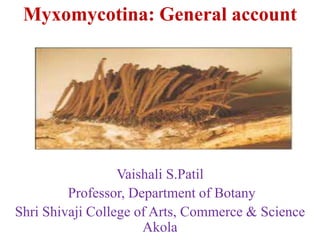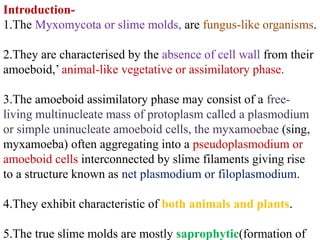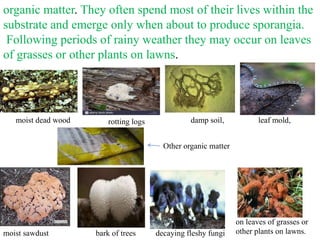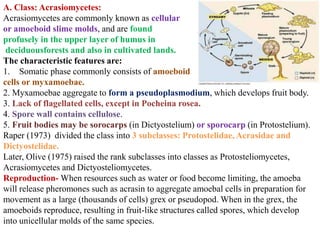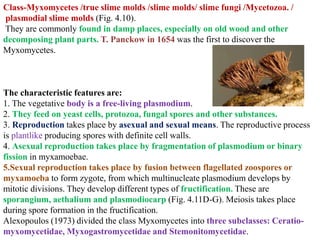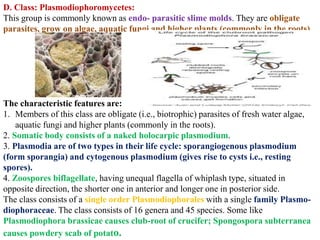This document provides an overview of Myxomycotina (slime molds). It discusses that they are fungus-like organisms characterized by an amoeboid vegetative phase without cell walls. The document outlines the key characteristics and life cycles of the four classes: Acrasiomycetes, Hydromyxomycetes, Myxomycetes, and Plasmodiophoromycetes. It also briefly discusses their economic importance in nutrient cycling and use in laboratory studies due to their protoplasm without cell walls.
